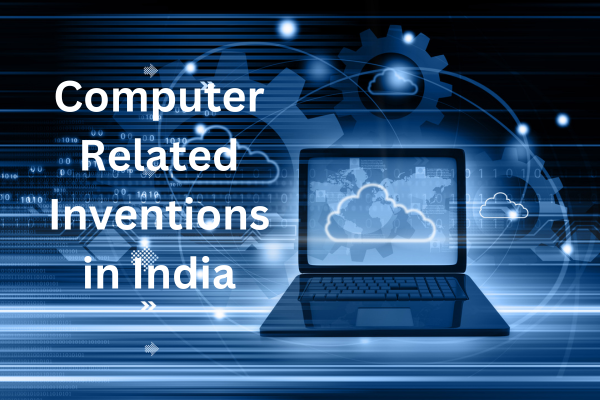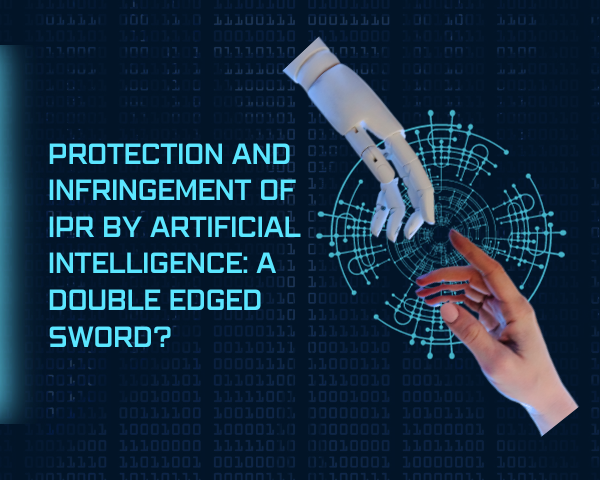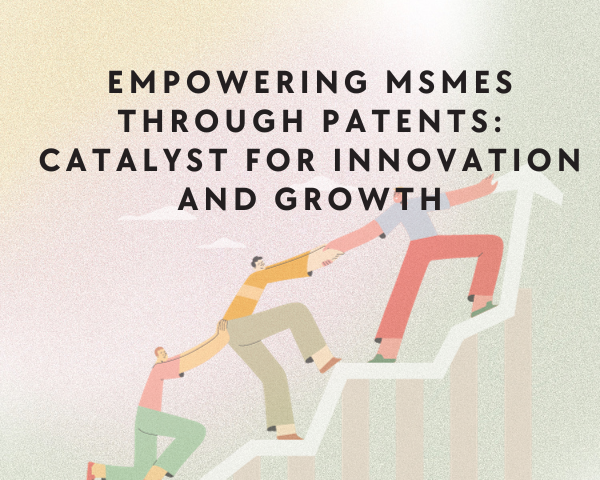INTRODUCTION
As technology continues to evolve at an unprecedented pace, Computer-Related Inventions (CRIs) have become a crucial component of modern innovation. CRIs are inventions that are based on computer software or hardware and are becoming increasingly important in a variety of fields, including finance, healthcare, and telecommunications. The Patents Act, 1970, provides for the protection of CRIs, but there has been significant debate over the years regarding the patentability of such inventions in India. The article delves into the legal framework surrounding CRIs in India, through the lens of case laws and guidelines issued by the Indian Patent Office.
COMPUTER RELATED INVENTIONS
A CRI comprises inventions that involve the use of computers, computer networks, or other programmable apparatus including inventions which have one or more features that are realized by wholly or partially employing a computer program or programs.
We see the use of CRIs in various industries such as medicine, telecommunication and finance. Computer algorithms used to analyze medical imaging data, such as X-rays or MRIs, is one such example, which can help doctors identify potential health issues that might otherwise have been missed. In the finance industry, CRIs have enabled the development of new trading algorithms and financial models that can process vast amounts of data in real time, providing traders with valuable insights and helping them make more informed investment decisions. In the telecommunications industry, CRIs have led to the development of new networking technologies that can process and transmit data at higher speeds and with greater reliability. These are just a few examples of how CRIs are being used to drive innovation and improve the quality of life in a variety of fields.
Although it is undeniable that the development of such innovations involves intellectual property, the crux of the matter revolves around the manner and degree to which they can be safeguarded.
SCOPE OF PROTECTION UNDER COPYRIGHT LAW
The Copyright Act, of 1957 defines “literary work” under section 2(o), to include computer programs, tables and compilations including computer databases. Copyright can protect certain kinds of CRIs, mainly computer software inventions. Specifically, copyright can protect the specific code, software program, or user interface that is created.
However, copyright protection does not extend to the ideas, concepts, or functionality of the CRIs. In other words, copyright does not prevent others from creating a similar software program or user interface, as long as they do not copy the original code or design. As a result, it is apparent that patent law offers a broader scope of protection in contrast to copyright law, which is primarily relied upon by inventors in this field.
PROTECTION UNDER PATENTS ACT, 1970
The protection of CRIs has not been a straightforward journey. Section 3(k) of the Patents Act, of 1970 provides a bar on the patentability of the invention related to a mathematical or business method or a computer program “per se” or algorithms. The term “per se” was interpreted and reinterpreted to include CRIs, other than computer programs.
In 2002, the Indian Patent Office issued guidelines on the patentability of CRIs. These guidelines provided that computer programs per se were not patentable inventions. But, those inventions which involved technical advancements or technical effects and had industrial applicability could be patentable. The revised guidelines of 2004 provided that inventions which involved a novel hardware component or those that produced a technical effect were patentable. However, inventions that were purely software-based and did not produce a technical effect were not patentable.In 2013, the Patent Office issued further guidelines and set forth that inventions involving a technical effect or those which solved a technical problem were patentable.
The existing examination guidelines for CRIs were issued by the Office of Patents on 30th June in the year 2017. These guidelines focus on the “technical contribution” of the invention along with the basic parameters of patentability. For example, a method of encoding and decoding video data may be patentable, while a method of hedging risks in commodity trading may not be patentable. Therefore the level of “technical contribution” remains open to interpretation.
JUDICIAL INTERPRETATIONS
This issue has frequently been brought before the courts of the country, with numerous cases addressing this question – “to what extent is a CRI protected under the Indian patent regime?”
One of the leading cases here is Ferid Allani v.Union of India (2018). In this case, the Petitioner had filed a national phase application for an invention titled “Method and Device for Accessing Information Sources and Services on the Web”. The IPO refused the patent because the method claims made by the applicant were a “computer program per se” and did not constitute to be a patentable invention as defined in Section 3(k) of the Patents Act, 1970. The Intellectual Property Appellate Board upheld this decision.
The petitioner then filed a writ petition challenging the exclusion of CRIs from patentability under the Patents Act, o1970. While upholding the validity of Section 3(k), the Court still maintained that “computer-related inventions must have a technical contribution or technical effect to be patentable.” The ruling unambiguously establishes that there is no complete prohibition on granting patents for CRIs, and thus provides a fresh perspective on how the patent office should handle future applications pertaining to claims of CRIs.
In the case of Yahoo! Inc. v. Controller of Patents & Rediff.com India Ltd. (2012) the petitioner challenged the Indian Patent Office’s rejection of its patent application for an online advertising invention, which utilized machine learning techniques. The Patent Office had rejected the application on the basis that it was a computer program per se and not an invention eligible for patent protection. Upon appeal, the Delhi High Court overruled the Patent Office’s decision, holding that the invention involved a technical advancement and was not merely a computer program per se.
Data Access Corporation v. Controller of Patents (2020) is a more recent case where Data Access Corporation applied for a patent for a “Method and System for Generating a Database”. The Patent Office rejected the application on the grounds that it related to a “mathematical method” and did not involve any technical effect. The IPAB overturned the rejection, stating that the invention involved a technical effect and solved a technical problem.
Therefore, we can gather that a key factor in determining whether a CRI is patentable or not depends on whether it involves a technical effect, advancement or contribution to already existing innovations. The interpretation of what entails the phrase “computer programs per se” is what determines whether a particular CRI is patentable in India.
CONCLUSION
The interpretation of Indian patent law concerning computer-related inventions remains an evolving area of law, and new cases are likely to arise as technology continues to advance. With the aid of the precedents and the dynamic guidelines of the Indian Patent Office, the patent regime in India is becoming more adaptable to exponential developments in the field. However, there is a long way to go for the intellectual property policymakers in the country to adequately cater to the needs of this swiftly developing industry.




